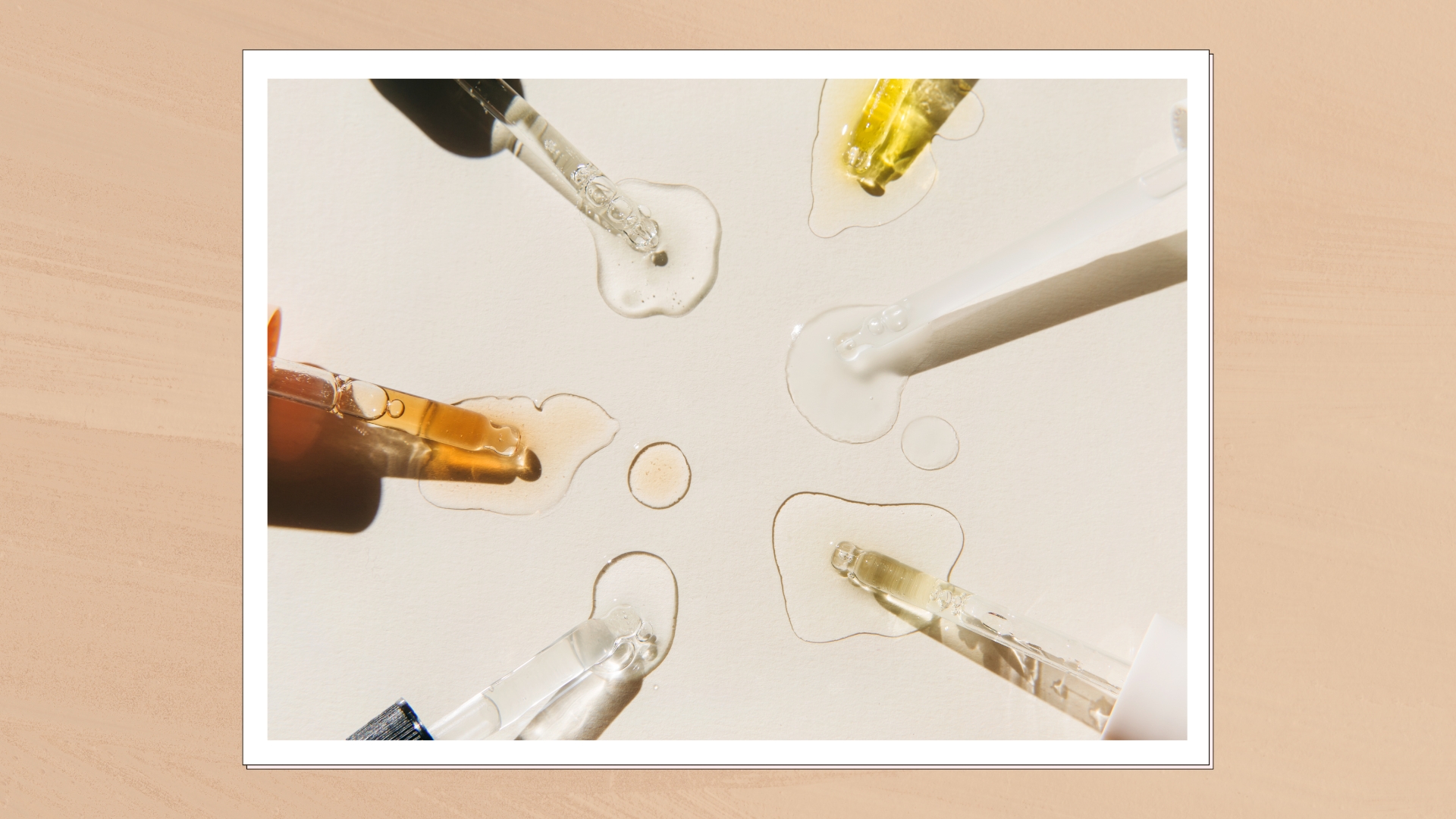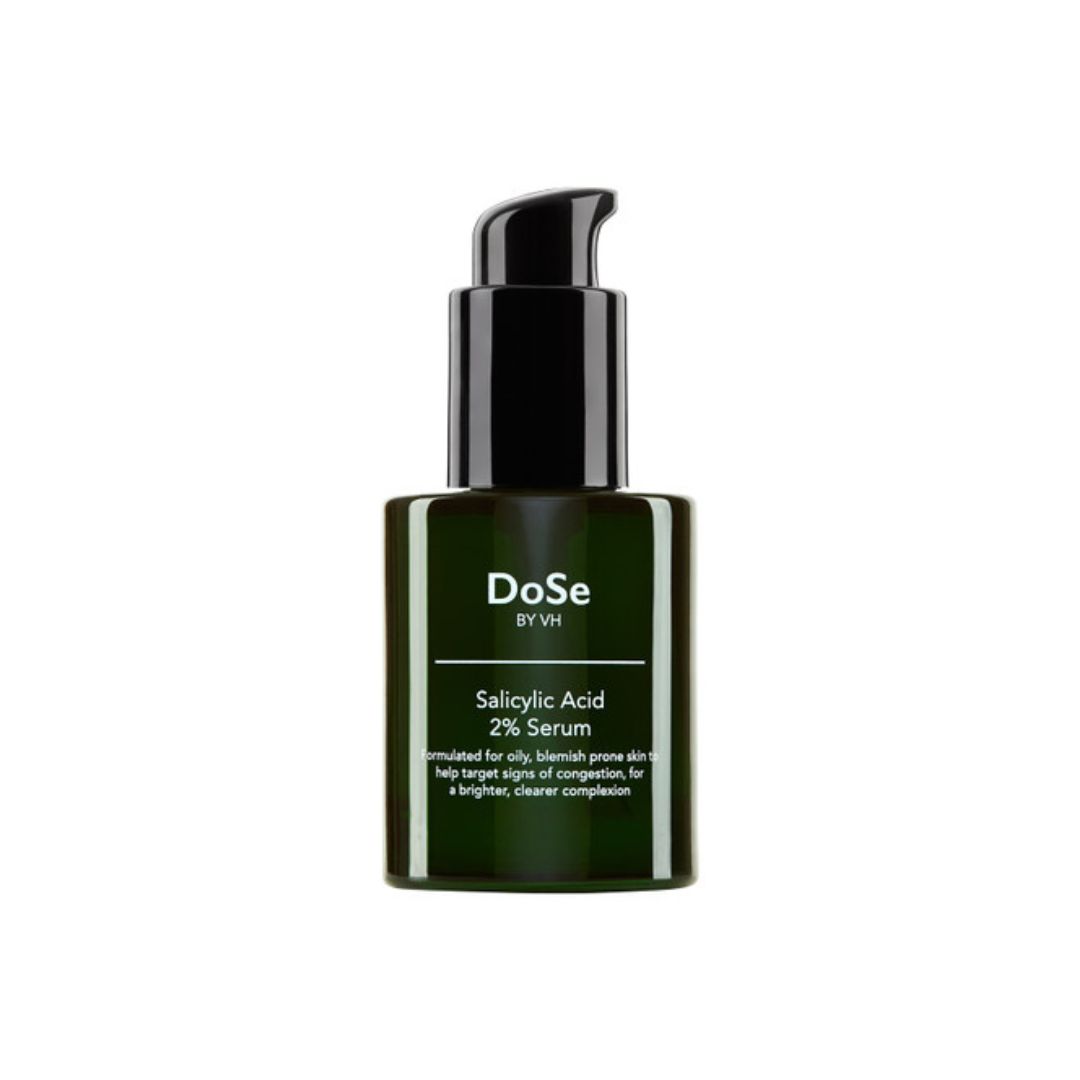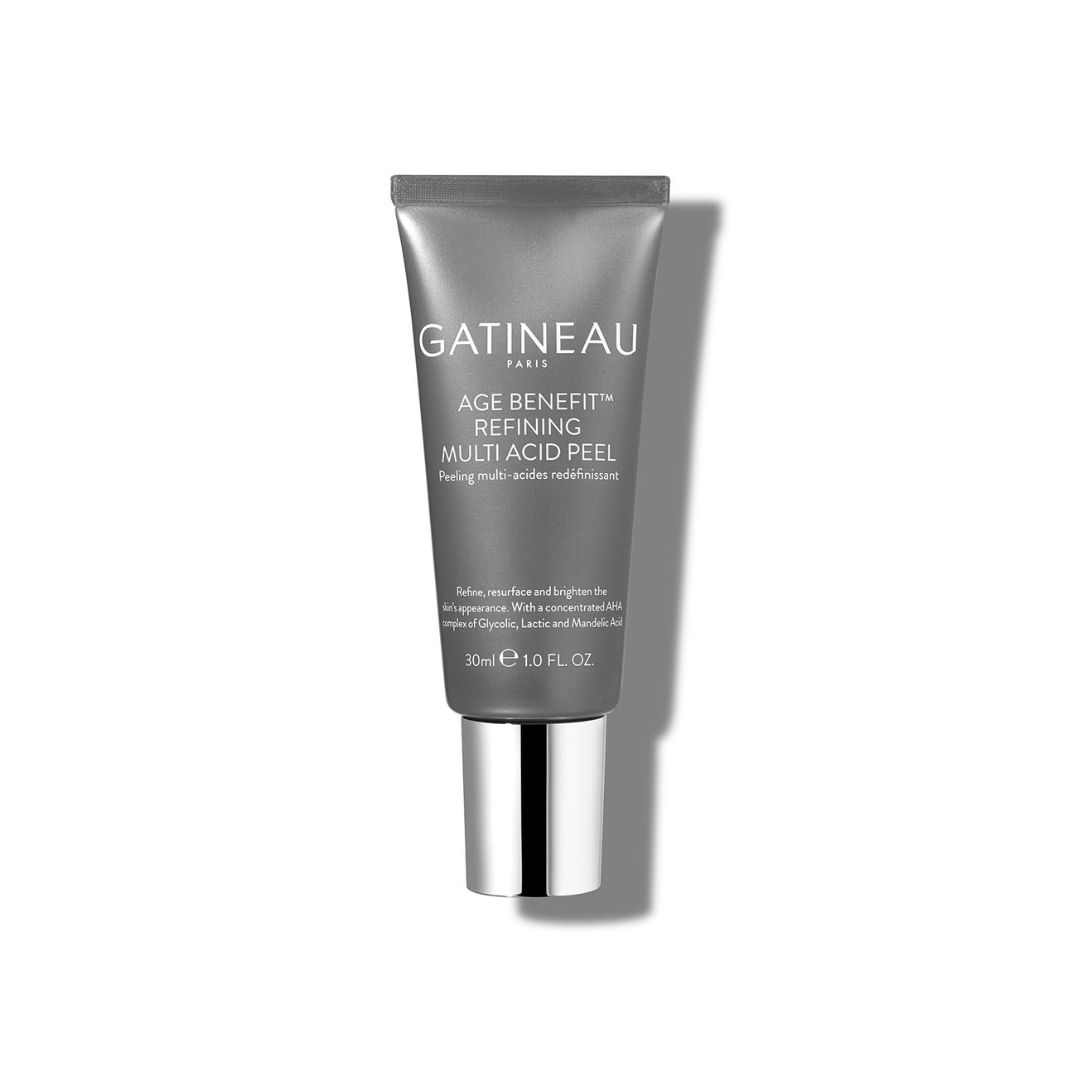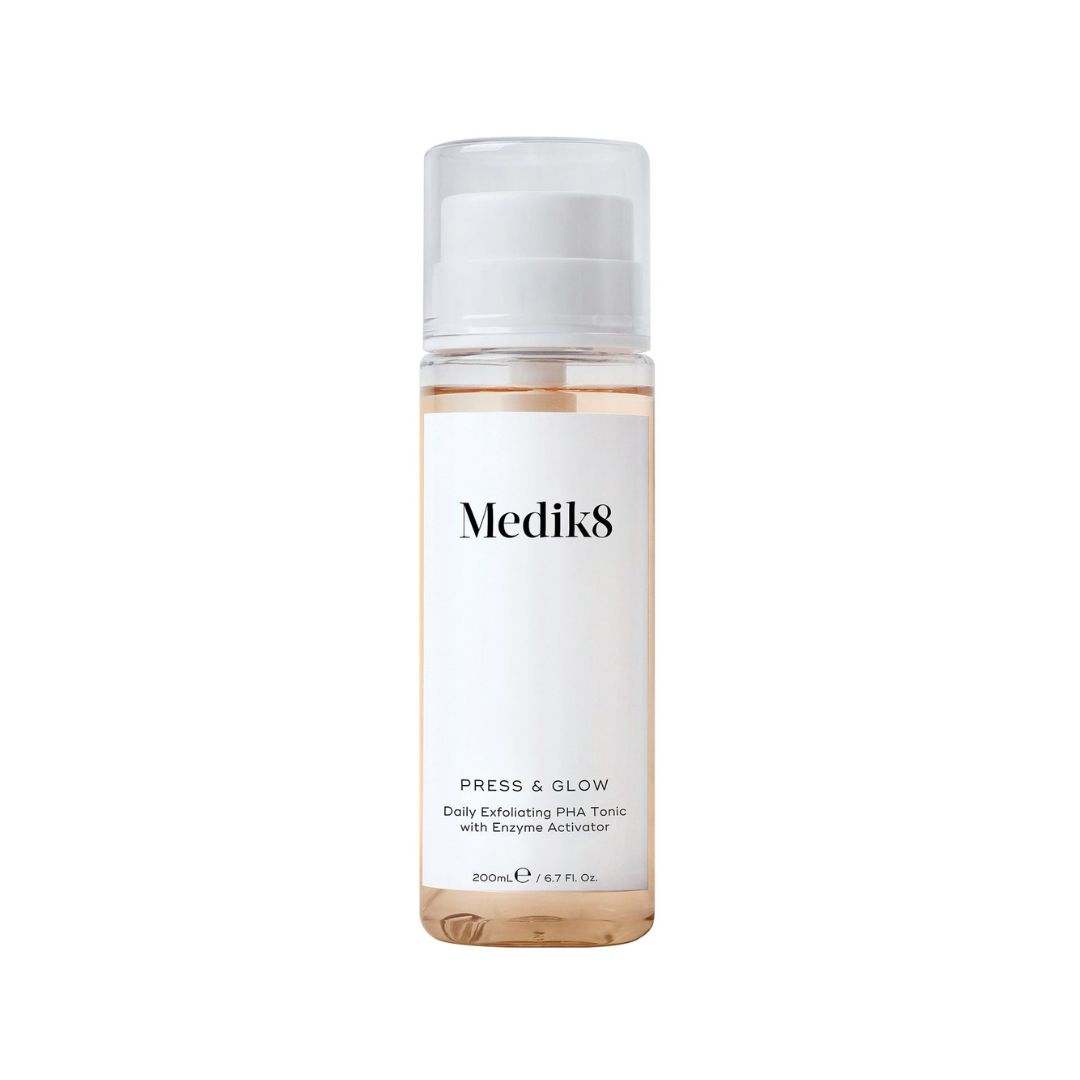
You may be wary of introducing a skincare product with the word 'acid' in its name, but not using a chemical exfoliant could mean that you are missing out on some of the most transformative ingredients available. Acids – also known as AHAs, BHAs and PHAs – are highly effective for treating an array of skincare concerns and, when used correctly, are completely safe.
In fact, you've likely already encountered several of these actives before, only they sometimes go by different names: glycolic acid, lactic acid (both popular AHAs) and salicylic acid (a BHA), to name just a few. Indeed, the best salicylic acid serums are a well-loved staple for many to tackle acne and congested pores.
But it's not just serums they feature in. You’ll find exfoliators in pretty much all skincare forms, from cleansers and toners to spot creams and nighttime treatments. "They dissolve dead skin cells and aim to unclog pores, leaving skin fresher, brighter and clearer, whilst removing dead skin cells," explains Shabir Daya MRPharmS, co-founder of Victoria Health.
And while increasingly popular, chemical exfoliants are often very misunderstood. So, to avoid any salicylic acid mistakes (and so on), we asked the experts to outline everything you need to know about these skincare heroes before adding any of them to your routine – and have shared their words of wisdom in this very guide.
What to know about AHAs, BHAs and PHAs – according to experts
Before we dive into the ins and outs of chemical exfoliators, let us first begin with why they're even necessary in the first place...
Why do we need to exfoliate our skin?
During an average 24-hour period, we shed almost a million skin cells – around 30,000-40,000 every hour! These cells are formed at the base of the epidermis (the top layer of the skin) and gradually move up until they reach the outer surface, where they die, break away and fall off the skin. This allows new cells to push up from beneath.
"When we’re young and healthy, our skin does a great job of shedding its own dead cells without any extra help," says Heather Wish, Global Education Manager at Paula’s Choice. "But over time, with age and unprotected sun exposure, the skin’s natural ability to shed these dead cells slows down." This is where exfoliation comes in to help to dislodge any "stuck" dead skin cells and allow new ones to emerge. Exfoliating also sweeps away any build-up of makeup and dirt deep within your pores that your cleanser couldn't reach.
Physical vs chemical exfoliation
There are two types of exfoliation: the first is a physical, gritty scrub to manually buff away flakes. "Physical exfoliators typically contain abrasive particles like beads or grains to scrub away dead skin cells," according to Shabir. "The results can be seen immediately, but they can strip, dry and be harsh on the skin."
The second is an acid exfoliant that usually comes in a liquid consistency. "Chemical exfoliation produces some of the most dramatic results you can get with at-home skin care treatments," says Heather. "Next to sunscreen, it’s the most difference-making product in your skincare routine."
There are many different types of chemical exfoliant
Exfoliating acids often fall into one of two camps: AHAs and BHAs, which stand for alpha hydroxy acids and beta hydroxy acids respectively. AHAs work by lifting off the build-up of dead cells on the skin's surface to uncover a brighter, softer complexion. BHAs, on the other hand, work by penetrating the pores to eliminate build-up and help to clear spots.
If you have particularly sensitive skin, you may wish to consider a third category: PHAS, or polyhydroxy acids, which are "similar to AHAs in that they perform the same exfoliation role, but are gentler on the skin causing less irritation," says Shabir. "Due to their larger molecular structure, PHAs work exclusively on the surface without disturbing the deeper, delicate layers."
You shouldn't try to fast-track results
It's often sensible to introduce new skincare actives to your skin gradually, but it's definitely true in the case of exfoliating acids. "If you’re new to using acid exfoliants, it’s smart to introduce them into your routine slowly," recommends Heather. "For initial use, space out the application to only two or three times in the first week. Sensitive skin should start usage [at] once a week. If your skin does well (no signs of distress), you can gradually increase the frequency of use up to twice a day."
A twice-per-day application can be a game changer if you have more stubborn bumps, clogs, acne or advanced signs of sun damage. Others will find once daily or even once every few days will suffice. It will take some experimenting to find the right cadence.
Gentle formulations are key
The best way to avoid over-exfoliation is to use a gentle exfoliant. "That means no irritants, such as high amounts of harsh, drying alcohol like SD alcohol, menthol, which makes skin tingle, and fragrance, whether synthetic or natural essential oils," says Heather. Gentle also means that the formula should contain soothing agents that keep skin in a calm, healthy state while the exfoliators go to work.
Examples of skin-soothing ingredients include bisabolol, green tea extract and yarrow, just to name a few. "When properly formulated, exfoliating acids should leave your skin in a calm, healthy state," explains Heather.
Acid exfoliants are quite straightforward to use
You may assume that something with such a "chemical" name would come with a long list of instructions, but the majority of liquid exfoliators are pretty low-maintenance to use. Most just require smoothing onto your skin with fingers or a soaked cotton pad, then they are simply left to get on with their job. If you use an overnight chemical peel, you’ll definitely notice a brighter and clearer complexion by morning.
Where and when to apply your chemical exfoliants
An acid exfoliator usually sits in between your cleanser and any other serums and moisturisers. If you are using one anywhere in your routine, especially during the day, always apply one of the best facial sunscreens (specifically an SPF of 30 or higher) in the morning. These exfoliants can increase your skin's sensitivity to the sun, making protection all the more crucial a step in your routine. Depending on your skin type, use these exfoliators around twice to three times a week.
Who would benefit from using acid exfoliators?
Almost everyone can benefit from using liquid exfoliators. "It’s just about finding the right formula and strength," says Lucy Vose, Gatineau's Global Head of Training. "Liquid exfoliation would be an advantage to skin concerns including dehydration, dullness, rough, uneven skin texture, hyperpigmentation, lines and wrinkles, congestion and breakouts."
The benefits of Alpha hydroxy acids (AHAs)
Lucy explains: "AHAs are big-hitter acids and are what I like to think of as a gym session for your complexion, reducing cell build-up, strengthening the barrier of the skin, reversing sun damage, boosting glow and kick-starting collagen production." There are a number of different types, but the most common are glycolic, the strong one for brightening; lactic, for pigmentation; citric, the go-easy one for pollution and azelaic, the delicate anti-inflammatory.
The benefits of beta hydroxy acids (BHAs)
"Beta hydroxy acids are lipophilic (oil-loving) and work similarly to AHAs but penetrate more deeply. "They put pores through their paces, ‘excavating’ embedded dirt and grime to keep pores clear and blemishes at bay," says Lucy. "Salicylic acid is a very popular BHA as it acts like a corkscrew, diving down into pores to clear blockages." BHAs are a massive deal for anyone struggling with oily, inflamed or spotty skin because they help reduce inflammation, fight bacteria and dry up excess oil.
The benefits of polyhydroxy acids (PHAs)
Polyhydroxy acids are an increasingly popular kind of exfoliating acid that is ready to steal the spotlight, especially for those with sensitive skin or who find they cannot tolerate other chemical exfoliants.
"Often seen as the underdogs of the hydroxy acids, PHAs (the most common being gluconolactone and lactobionic acid) are basically a new generation of water-soluble [acids]," explains Lucy. "They have all the exfoliating, cell regenerating benefits, but with less of the side-effects." The reason for their gentle nature? PHAs have a larger molecular size than AHAs and are therefore unable to penetrate the deeper layers of your skin. Instead, they work exclusively on the skin’s surface to boost cell renewal without irritating your complexion.
The best new acid exfoliators to buy now
In case you're looking to add a few pore- and texture-busting ingredients to your routine, we've rounded up a few chemical exfoliators to try below.

RRP: £15
With a formula of 2% salicylic acid (our fave BHA), this serum works to exfoliate the pores, ridding them of dead cells, dirt and excess oil – for smoother and clearer-looking skin.

RRP: £49
Featuring a powerhouse 10% blend of AHAs (including glycolic, lactic and mandelic acid), this gel peel works to exfoliate your skin to leave you glowing.

RRP: £32
This toner features gluconolactone (an exfoliating PHA), which works to buff away dead skin, promoting clearer and more radiant skin.







